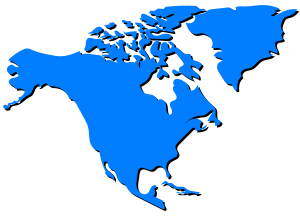Enigmacursor mollyborthwickae
Every month, 100,000 readers use the Dinosaur Database, but we receive no support from you. Developing and updating the database requires a lot of work. If you want it to remain open and be updated, please support us via the "Buy us a coffee" button available on every page or via the Support page.
Dinosaur: Enigmacursor mollyborthwickae
| Length*: | 2 m | 6.6 ft |
| Weight*: | 18 kg | 40 lb |
*The largest known specimen
Period
Epoch: Late Jurassic
Stage: Kimmeridgian-Tithonian
Years: 154.8–145 Ma
Details
Status: valid
Author: Maidment & Barrett
Year: 2025
Distribution
Area: North America
Country: USA
Region: Colorado
Formation: Morrison
Classification
Description
Enigmacursor mollyborthwickae
Enigmacursor mollyborthwickae is a small-bodied neornithischian dinosaur from the Upper Jurassic Morrison Formation of western North America. It was described in 2025 based on a three-dimensionally preserved partial skeleton from Moffat County, Colorado. The name Enigmacursor (meaning “mysterious runner”) reflects the uncertain history of small ornithischian taxonomy from the Morrison Formation, while the species name honors philanthropist Molly Borthwick.
The discovery of Enigmacursor sheds light on the underappreciated diversity of small bipedal herbivores in the Morrison ecosystem, which has long been dominated by more famous taxa like Allosaurus, Stegosaurus, and Diplodocus. Its anatomy places it close to Yandusaurus hongheensis from China, suggesting complex biogeographic patterns in Late Jurassic ornithischians.
Geographic Coordinates
Type locality: Skull Creek Estates, Moffat County, Colorado, USA
Physical Characteristics
Enigmacursor was a small, gracile dinosaur, measuring approximately 2–3.0 m (6.5–9.8 ft) in length and estimated to weigh around 18–25 kg (40–55 lb). These estimates are based on proportional scaling from the preserved limb bones, particularly the 169 mm long femur and 209 mm tibia, and comparison with related neornithischians such as Hypsilophodon.
Key features include:
- Elongated hind limbs and lightweight construction indicative of cursorial (running) behavior
- Absence of a supracetabular crest on the ilium
- A unique femoral anatomy including a trochanteric fossa, low anterior trochanter, and medially directed hook-like posterior condyle of the tibia
- Premaxillary teeth with subtle ridges and marginal denticles, likely used for cropping vegetation
Unlike larger ornithopods, Enigmacursor lacks robust chewing adaptations and had a lightly built axial skeleton, more akin to basal neornithischians.
Paleontological Material
Holotype (NHMUK PV R 39000) includes:
- 3 teeth
- 3 cervical, 11 dorsal, 2 dorsosacral, and 5 caudal vertebrae
- 10 dorsal ribs, 5 chevrons
- Right sternum
- Both scapulae, humeri, ulnae, radii, and 3 metacarpals
- Left ilium, right pubis, right ischium
- Both femora, tibiae, fibulae, right astragalus
- Both feet (pedes)
Diet and Feeding Habits
Enigmacursor was herbivorous, feeding on low vegetation such as ferns, cycads, and primitive flowering plants. Its simple, conical premaxillary teeth with fine denticles suggest it was a selective browser or nipper. Its small size and cursorial limbs imply it may have foraged in open areas, relying on speed to evade predators.
Habitat and Distribution
Enigmacursor lived during the Kimmeridgian–Tithonian stages of the Late Jurassic (approximately 157–145 million years ago), in what is now the western United States. The Morrison Formation represented a semi-arid, seasonal environment of floodplains and river channels, supporting a rich dinosaur fauna.
Coexisting taxa included:
- Large sauropods (Diplodocus, Camarasaurus)
- Stegosaurs (Stegosaurus)
- Large theropods (Allosaurus, Torvosaurus)
- Other small ornithischians of uncertain taxonomy
Behavior and Social Structure
Although no direct evidence exists, the long limbs and lightly built skeleton suggest that Enigmacursor was a swift, solitary or possibly gregarious forager. Its anatomical traits point to an active lifestyle, possibly avoiding predators through agility rather than defense.
Discovery and Research
The specimen was discovered in 2021–2022 by Dinosaurs of America LLC and later acquired by the Natural History Museum, London, with support from private donors. It was formally described in 2025 by Susannah C. R. Maidment and Paul M. Barrett.
Phylogenetic analysis placed Enigmacursor as a non-cerapodan neornithischian, closely related to the Asian taxon Yandusaurus. This relationship supports possible faunal exchange between Asia and North America during the Late Jurassic.
Significance and Notable Facts
- First new small neornithischian named from the Morrison Formation in over a century
- Provides the most complete data on Morrison small-bodied ornithischians
- Its unique femoral morphology distinguishes it from other known ornithischians
- Highlights the previously underestimated diversity of small herbivores in the Late Jurassic
Conclusion
Enigmacursor mollyborthwickae is a key addition to the dinosaurian diversity of the Morrison Formation. As a fast-running, lightly built herbivore, it likely played a significant ecological role among the vast sauropods and theropods of its time. Its anatomical distinctiveness and phylogenetic placement fill a gap in our understanding of early neornithischian evolution and highlight the importance of continued exploration of less charismatic dinosaur clades.
Locations
Sources
Material: NHMUK PV R 39000, a partial skeleton that includes three teeth, three cervical, 11dorsal, two dorsosacral and five caudal vertebrae, 10 dorsal ribs, five chevrons, right sternum, bothscapulae, both humeri, both radii, both ulnae, three metacarpals, left ilium, right ischium, right pubis,both femora, both tibiae, both fibulae, right astragalus and both pedes
References: Maidment, S.C.R. & Barrett, P.M. (2025). Enigmacursor mollyborthwickae, a neornithischian dinosaur from the Upper Jurassic Morrison Formation of the western USA. Royal Society Open Science, 12: 242195.



